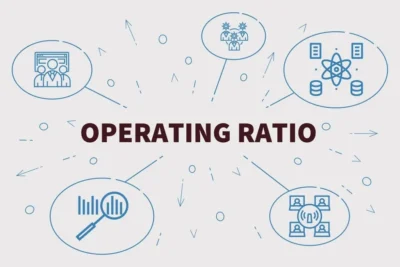The term 127.0.0.1:62893 refers to a specific IP address and port combination used primarily for local testing and development purposes. The IP address 127.0.0.1 is commonly known as the “localhost,” which is a loopback address that points back to the same device. This allows developers and system administrators to simulate a network connection within their own machine without reaching out to external networks. The port number 62893 is one of many possible ports that can be used in combination with this IP address to handle specific services or applications, enabling them to communicate through this designated entry point on the device.
When working with 127.0.0.1:62893, it’s important to understand that this setup is typically used for scenarios like testing web servers, databases, or other networked applications locally before deploying them to a live environment. This local testing environment helps ensure that any changes made will function correctly without impacting the production systems. Security is also a key consideration; while 127.0.0.1 inherently limits access to the local machine, developers must still ensure that the services running on port 62893 are properly configured to prevent unauthorized access or conflicts with other services.
Table of Contents
What is 127.0.0.1:62893 used for?
The IP address and port combination 127.0.0.1:62893 is primarily used for local testing and development purposes. When developers are working on applications that require network communication, they often use 127.0.0.1, known as “localhost,” to simulate a server environment on their own machine. This allows them to test how an application behaves when it receives requests without exposing the application to the external internet. The port number 62893 is used as a specific entry point for a service running on the localhost, enabling developers to manage multiple services by assigning different port numbers.
127.0.0.1:62893 could be used for various development tasks, such as testing a web server or a database system before it is deployed to a production environment. By using this local loopback address, developers can ensure that their code is functioning correctly and securely within a controlled environment. This is particularly useful for debugging and troubleshooting, as it allows for the safe testing of new features or configurations without affecting live users or systems.
127.0.0.1:62893 is valuable for configuring and running services that are only intended to be accessible locally. For example, a developer might run a development server on this address to view how their website behaves with new changes. The use of a specific port like 62893 helps to isolate this service from others that might be running on different ports, reducing the risk of conflicts and making it easier to manage multiple services on the same machine.
How to troubleshoot 127.0.0.1:62893 connection issues?
Troubleshooting connection issues with 127.0.0.1:62893 typically involves a few key steps to identify and resolve the problem. First, you should check whether the service or application that is supposed to be listening on port 62893 is actually running. You can do this by using command-line tools like netstat or lsof on Linux and macOS, or netstat on Windows, to see if the port is open and being used by the correct application. If the port isn’t listed or is being used by another process, this could be the source of the problem.
Ensure that your firewall or antivirus software isn’t blocking the connection. Even though 127.0.0.1 is a loopback address that should not interact with the external network, overly strict security settings can sometimes interfere with local connections. Temporarily disabling your firewall or adjusting its settings to allow traffic on port 62893 might resolve the issue. Be sure to re-enable your security software after testing to maintain your system’s safety.
If the service is running and the firewall isn’t blocking the connection, the issue might be related to the configuration of the service itself. Check the service’s configuration files to ensure that it is correctly set to listen on 127.0.0.1:62893. Misconfigurations, such as binding to the wrong IP address or port, can prevent the service from properly accepting connections. Restarting the service after making any configuration changes is often necessary to apply the new settings.
Is 127.0.0.1:62893 a secure connection?
The connection 127.0.0.1:62893 is generally considered secure because it is a loopback address that routes the connection back to the local machine, meaning it doesn’t expose your data or services to external networks. Since 127.0.0.1 is reserved for local communication, any data transmitted over this address stays within the local computer, significantly reducing the risk of external attacks or interception by unauthorized parties.
The security of 127.0.0.1:62893 also depends on how the service running on port 62893 is configured and secured. If the application or service has vulnerabilities, those could still be exploited locally. For instance, if malicious software is running on your machine, it could potentially access or interfere with the service running on 127.0.0.1:62893. Therefore, it’s crucial to ensure that the service is properly secured, with up-to-date software and appropriate access controls in place.
While the loopback address itself is secure from external threats, it’s important to consider the broader security context. For example, if you’re developing a web application on 127.0.0.1:62893, make sure that sensitive data is handled securely, even in a local environment. Using HTTPS instead of HTTP for local testing, implementing proper authentication, and keeping your development environment secure are all essential practices to ensure that the use of 127.0.0.1:62893 remains secure.
How to configure 127.0.0.1:62893 on Windows?
To configure 127.0.0.1:62893 on a Windows machine, you first need to ensure that the service or application you intend to run on this address is correctly installed and set up to listen on port 62893. Typically, this configuration is handled within the application’s settings or configuration files. For example, if you’re running a web server or a local development server, you’ll need to specify 127.0.0.1 as the IP address and 62893 as the port in the server’s configuration file. After making these changes, restart the application to apply the new settings.
You should verify that port 62893 is open and listening for connections on 127.0.0.1. You can do this by using the netstat command in Command Prompt. Open Command Prompt as an administrator and type netstat -an | find "62893". This command will display any processes that are listening on port 62893. If the port is not listed, it may indicate that the service isn’t running correctly, or another service may be using that port, requiring you to troubleshoot further.
Ensure that your Windows Firewall or any other security software is configured to allow traffic on port 62893. Although 127.0.0.1 is a local address and typically not blocked by firewalls, overly restrictive security settings could prevent the service from operating correctly. You can configure firewall rules through the Windows Defender Firewall settings, allowing inbound and outbound traffic on 62893 specifically for 127.0.0.1. After these steps, your service should be properly configured and accessible on 127.0.0.1:62893.
Why can’t I connect to 127.0.0.1:62893?
If you can’t connect to 127.0.0.1:62893, the issue may stem from the service or application that is supposed to be listening on that port. One of the most common reasons for this connection failure is that the service isn’t running or hasn’t been configured correctly to listen on port 62893. You should verify that the service is active and properly set up to bind to 127.0.0.1 and port 62893. This can be done by checking the service’s settings or configuration files and ensuring that the service is started.
Another potential issue could be that another application is already using port 62893. On Windows, you can use the netstat command to check if the port is already in use by another process. Open Command Prompt as an administrator and run netstat -an | find "62893" to see if any process is occupying the port. If another application is using this port, you’ll need to either stop that application or configure your service to use a different port.
Firewall or security software settings might be blocking the connection to 127.0.0.1:62893. Although 127.0.0.1 typically routes traffic internally within your local machine, strict firewall settings could inadvertently block the connection. Check your Windows Firewall settings or any third-party security software to ensure that traffic on port 62893 is allowed. Adjusting these settings should help resolve the connectivity issue.
What applications commonly use 127.0.0.1:62893?
The IP address 127.0.0.1:62893 is typically used in various local development environments, where developers need to test applications or services on their own machines before deploying them to a live environment. For example, web development frameworks like Django or Flask might use this address and port combination to serve a local version of a website or web application. This setup allows developers to view and interact with their projects as if they were hosted on a live server, but within the safety and privacy of their own computer. By binding the server to 127.0.0.1, developers ensure that the service is only accessible locally, preventing external access during the development and testing phases.
Another common use of 127.0.0.1:62893 is within database management tools and systems. Databases like MySQL, PostgreSQL, or MongoDB might be configured to run on specific ports for local testing and development. For instance, a developer might set up a local instance of a database to listen on port 62893 while they test database queries, migrations, or other data-related functions within an application. This local environment helps developers to simulate the production database’s behavior without risking real data, making it easier to troubleshoot and optimize queries before deploying them to a live database.
127.0.0.1:62893 might also be used by various software development tools that require local network communication. For instance, IDEs or code editors like Visual Studio Code, which have integrated server functionality, might utilize this address and port to serve preview versions of applications or to enable features like live reloading, where changes in the code are automatically reflected in the running application. This setup enhances the development workflow by providing immediate feedback and ensuring that all components of the application are working together as expected before any external deployment occurs.
How to check if 127.0.0.1:62893 is working?
To check if 127.0.0.1:62893 is working, the first step is to ensure that the service or application intended to run on this IP and port is active. You can do this by opening a web browser or a terminal and trying to connect directly to http://127.0.0.1:62893. If the service is a web server, the browser should display the web page or application that the server is hosting. If you’re using a command-line tool like curl, you can issue a request to the address, and the response will indicate whether the service is running and accessible on that port.
If accessing 127.0.0.1:62893 through a browser or terminal does not work, the next step is to verify that the port 62893 is actually being used by the correct service. On Windows, you can use the netstat command to list all active connections and ports. Open Command Prompt as an administrator and type netstat -an | find "62893". This command will show you if the port is being used and by which process. If you see that the port is listening, this confirms that a service is running on 127.0.0.1:62893. If the port is not listed, the service might not be running, or it might be configured to use a different port.
You should check if any firewall or security settings might be blocking the connection to 127.0.0.1:62893. Although 127.0.0.1 is a local loopback address, some firewall configurations might block connections on certain ports as a security measure. You can temporarily disable your firewall or create a rule that allows traffic on port 62893 to see if this resolves the issue. Once you’ve confirmed that the connection is working, remember to re-enable your firewall to maintain your system’s security.
Can I change the port 62893 on 127.0.0.1?
Yes, you can change the port number 62893 associated with 127.0.0.1 if needed, depending on the application or service you’re using. The port number is essentially an entry point for network communication, and most applications allow you to specify which port they should listen on. This is typically done in the configuration settings of the application. For example, if you’re running a web server or database locally, you would look for a configuration file or a settings option where the port number is defined. By changing this value to a different port number, the application will start listening on the new port instead of 62893.
To change the port, first, you need to identify the specific configuration file or settings section where the port number is defined. This file is often named something like config, settings, or specific to the application (e.g., httpd.conf for Apache servers). Once located, find the line where the port is set, which might look like Listen 62893 or similar. Change 62893 to the new desired port number, save the changes, and then restart the application or service to apply the new configuration. This change will direct the application to use the new port while still operating on the 127.0.0.1 IP address.
It’s important to ensure that the new port number you choose is not already in use by another service on your system, as this can cause conflicts. You can check available ports using commands like netstat on Windows or lsof on Unix-based systems. Additionally, remember to update any firewall rules or security settings to allow traffic on the new port if necessary, ensuring that the application continues to function correctly.
What does the error “connection refused 127.0.0.1:62893” mean?
The error message “connection refused 127.0.0.1:62893” indicates that your attempt to connect to the service or application running on 127.0.0.1 (localhost) via port 62893 was unsuccessful. The term “connection refused” typically means that while your machine attempted to establish a connection, the request was rejected because there is no service actively listening on that port. This could occur if the service you are trying to access is not running, or if it has been configured to listen on a different port or IP address.
One common cause of this error is that the application or service expected to be running on port 62893 is not actually started. For instance, if you’re trying to connect to a local web server or database and see this error, the server or database might not be running, or it might have crashed. To resolve this, you should verify that the service is indeed active and configured to listen on the correct port. Restarting the service often resolves the issue if it was inadvertently stopped.
Another possible reason for the “connection refused” error is that a firewall or security software on your machine is blocking the connection to 127.0.0.1:62893. Although 127.0.0.1 is a loopback address and generally considered safe, overly restrictive firewall settings might still interfere with connections to certain ports. Checking and adjusting your firewall settings to allow traffic on port 62893 can help resolve this issue, enabling the connection to be established successfully.
How to secure 127.0.0.1:62893?
Securing 127.0.0.1:62893 primarily involves ensuring that the service running on this IP address and port is properly configured and protected from unauthorized access. Although 127.0.0.1 is a loopback address that only allows connections from the local machine, it’s still important to safeguard the application to prevent potential security risks. Start by ensuring that the service or application is updated with the latest security patches. Developers often release updates to address vulnerabilities, so keeping the software current is a critical first step in maintaining security.
Another important aspect of securing 127.0.0.1:62893 is configuring strong authentication and access controls for the service running on this port. Even though the service is accessible only locally, it’s a good practice to require authentication for accessing sensitive applications. Implementing strong passwords or using token-based authentication can prevent unauthorized users from accessing the service if they gain access to the local machine. Additionally, consider setting up role-based access controls (RBAC) if the application supports it, limiting the actions different users can perform based on their roles.
Review your firewall and security software settings to ensure that they are correctly configured to protect 127.0.0.1:62893. While the loopback interface is generally safe, overly permissive firewall rules could inadvertently expose your service to unnecessary risks. Ensure that only necessary services are allowed to communicate with 127.0.0.1:62893 and that any unnecessary ports are closed. Moreover, consider using tools like intrusion detection systems (IDS) to monitor for suspicious activity on your local network, adding an extra layer of security even for local connections.
What is the role of 127.0.0.1:62893 in localhost testing?
In localhost testing, 127.0.0.1:62893 plays a crucial role as it allows developers to simulate a server environment on their own machine without the need for external network connectivity. The IP address 127.0.0.1 is the standard loopback address, which means that any requests sent to this address are routed back to the local machine itself. This setup is ideal for testing and development because it ensures that applications can be run and tested in isolation from the internet or other network environments, providing a safe and controlled environment for development work.
The specific port number, 62893, is used to direct traffic to the exact service or application that the developer is working on. In a development environment, multiple services might be running simultaneously, each on a different port, to test how they interact or function independently. By using a unique port like 62893, developers can isolate the application they are testing, ensuring that there are no conflicts with other running services and that they can accurately monitor the application’s behavior and performance.
Using 127.0.0.1:62893 in localhost testing helps in troubleshooting and debugging applications before they are deployed to a production environment. Developers can simulate real-world scenarios, identify and fix issues, and optimize the application in a private environment that mirrors the eventual deployment setup. This approach minimizes the risk of errors or security vulnerabilities once the application is moved to a live server, thereby enhancing the overall reliability and security of the software.
How to access 127.0.0.1:62893 on Mac?
To access 127.0.0.1:62893 on a Mac, you’ll typically start by ensuring that the service or application you’re trying to reach is running on your local machine and is configured to listen on port 62893. If you’re working with a web-based application, you can simply open a web browser like Safari or Chrome and enter http://127.0.0.1:62893 in the address bar. This will direct your browser to connect to the service running on the local loopback address at the specified port, allowing you to interact with the application just as you would with a remote server.
If you’re working with a command-line tool or terminal, you can also use commands like curl to access 127.0.0.1:62893. For example, typing curl http://127.0.0.1:62893 in Terminal will send a request to the local service and display the response in the terminal window. This is particularly useful for testing APIs or other services that may not have a graphical interface. The output in Terminal will help you verify that the service is running correctly and that it is responding to requests as expected.
If you’re having trouble accessing 127.0.0.1:62893, it’s important to check if your firewall settings are blocking the connection. On macOS, you can manage firewall settings through the Security & Privacy panel in System Preferences. Ensure that the application or service is allowed to accept incoming connections. Additionally, verify that no other application is using port 62893, as port conflicts can prevent the correct service from being accessed. After confirming these settings, you should be able to access 127.0.0.1:62893 without issues.












